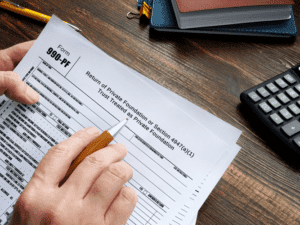Let’s delve deeper into these aspects while adding a few more points. Based on your analysis and market research, you expect the building to have a useful life of 25 years. After that, you anticipate being able to sell the building for $200,000. Sarah Sharkey is a personal finance writer with a master’s degree in management from the Hough School of Business at the University of Florida. She has written for numerous personal finance publications including Money Under 30 and The College Investor.
Create a free account to unlock this Template

On June 8, 1986, you bought and placed in service a used mobile home for use as rental property at a total cost of $11,500. The total unadjusted basis of your 10-year recovery property placed in service in 1986 was $37,500 ($26,000 + $11,500). In 1989, 1990, and 1991, your ACRS deduction was $3,750 (10% × $37,500).
How Salvage Value Influences ROI and Depreciation
- However, the IRS can deny permission if Form 3115 is not filed on time.
- When listed property is used for business, investment, and personal purposes, no deduction is allowable for its personal use either in the current year or any later tax year.
- Generally, you get no ACRS deduction for the tax year in which you dispose of or retire recovery property, except for 15-, 18-, and 19-year real property.
- For example, a salesperson visiting customers on an established sales route will not normally need a written explanation of the business purpose of his or her travel.
In Table 2 or 3 at the end of this publication in the Appendix, find the month in your tax year that you first placed the property in service as rental housing. Use the percentages listed under that month for each year of the recovery period. Table 2 shows percentages for low-income housing placed in service before May 9, 1985. Table 3 shows percentages for low-income housing placed in service after May 8, 1985, and before 1987. It is the name given to tax rules for getting back (recovering) through depreciation deductions the cost of property used in a trade or business or to produce income. These rules are mandatory and generally apply to tangible property placed in service after 1980 and before 1987.
Double-Declining Balance
For each of the remaining years in the recovery period, you take a full year's deduction. If you hold the property for the entire recovery period, a half-year of depreciation is allowable for the year following the end of the recovery period. Accurately determining the salvage value is essential for calculating depreciation, understanding the total cost of https://www.bookstime.com/articles/what-are-depreciable-assets ownership, and making informed financial decisions about asset purchases and disposals. This method requires an estimate for the total units an asset will produce over its useful life. Depreciation expense is then calculated per year based on the number of units produced. This method also calculates depreciation expenses based on the depreciable amount.
- This asset's salvage value is $500 and its useful life is 10 years.
- A normal retirement is a permanent withdrawal of depreciable property from use if the following apply.
- Retirements can be either normal or abnormal depending on all facts and circumstances.
- PwC refers to the US member firm or one of its subsidiaries or affiliates, and may sometimes refer to the PwC network.
- Their values will automatically flow to respective financial reports.You can have access to Deskera's ready-made Profit and Loss Statement, Balance Sheet, and other financial reports in an instant.

Have your business accountant or bookkeeper select a depreciation method that makes the most sense for your allowable yearly deductions and most accurate salvage values. For specific assets, the newer they are, the faster they depreciate in value. In these situations, the declining balance method tends to be more accurate than the straight-line method at reflecting book value each year. Depreciation refers to the decrease in an asset’s value over its useful life, and the salvage value is an estimate of the asset’s worth at the end of that period. The total amount that can be depreciated over an asset’s life is its initial cost minus its estimated salvage value. Each expenditure is recorded as a separate item and not combined with other expenditures.

In general, salvage vehicles are worth between 20% and 40% less than their Kelley Blue Book value. With that, it’s a good idea to get a salvaged vehicle appraised privately to determine its value accurately. This formula is best for production-focused businesses with asset output that fluctuates due to demand. If you have questions about a tax issue, need help preparing calculating salvage value your tax return, or want to download free publications, forms, or instructions, go to IRS.gov and find resources that can help you right away. Employees claiming the standard mileage rate or actual expenses (including depreciation) must use Form 2106 instead of Part V of Form 4562. Employees claiming the standard mileage rate may be able to use Form 2106-EZ.
- Depreciation determined by this method must be expensed in each year of the asset's estimated lifespan.
- The rate of interest and other taxes contribute to determining the estimated monthly installments.
- Perhaps you hyper-customized a machine to the point where nobody would want it once you’re through with it.
- Determine salvage value using the rules discussed earlier, including the special 10% rule.
- The buyer will want to pay the lowest possible price for the company and will claim higher depreciation of the seller's assets than the seller would.
- The percentages for 18-year real property under the alternate method are in Tables 7, 8, 10, 11, 14, and 15 in the Appendix.
Consider all these factors before you arrive at a useful life for your property. The amount of the deduction in any year also depends on which method of depreciation you choose. The cost of certain intangible property that you acquire after August 10, 1993, must be amortized over a 15-year period. You figure your ACRS deduction for 1995 for the full year and then prorate that amount for the months of use.
However, you’ll need to have a salvage title vehicle privately appraised on a case-by-case basis to determine its market value. A company estimates an asset's useful life and salvage value (scrap value) at the end of its life. Depreciation determined by this method must be expensed in each year of the asset's estimated lifespan. The required use of the straight line method for an item of listed property that does not meet the predominant use test is not the same as electing the straight line method. It does not mean that you have to use the straight line method for other property in the same class as the item of listed property.
- Bill Nelson is an inspector for Uplift, a construction company with many sites in the local area.
- Gain recognized on a disposition is ordinary income to the extent of prior depreciation deductions taken.
- A company uses salvage value to estimate and calculate depreciate as salvage value is deducted from the asset's original cost.
- A retirement is generally considered normal unless you can show that you retired the property because of a reason you did not consider when you originally estimated the useful life of the property.
- Your deduction for 1985 through 2003 is shown in the following table.
